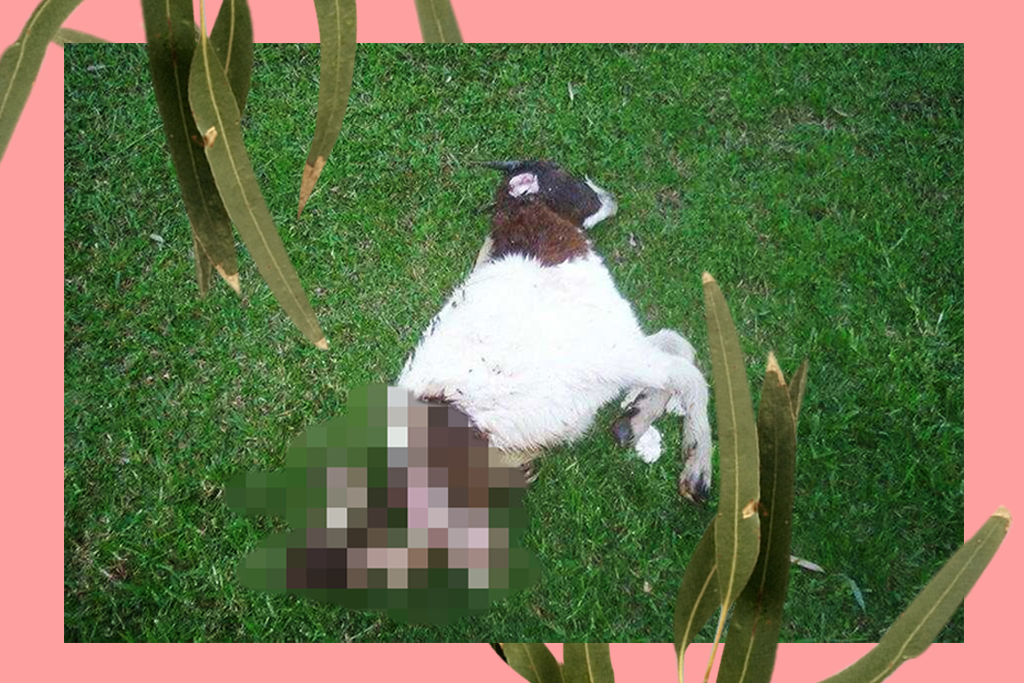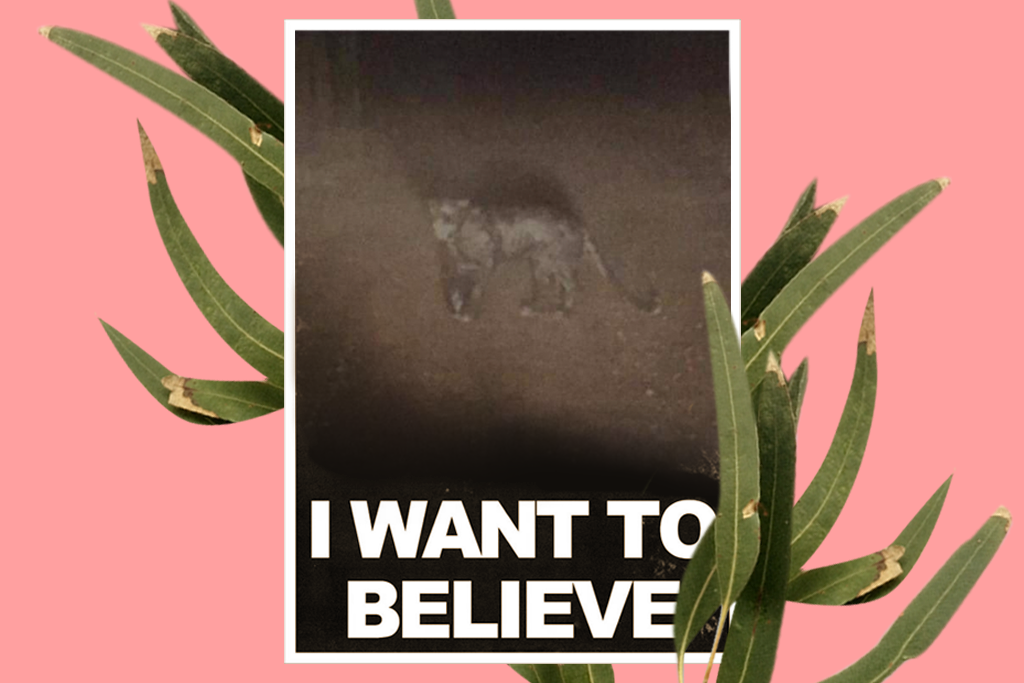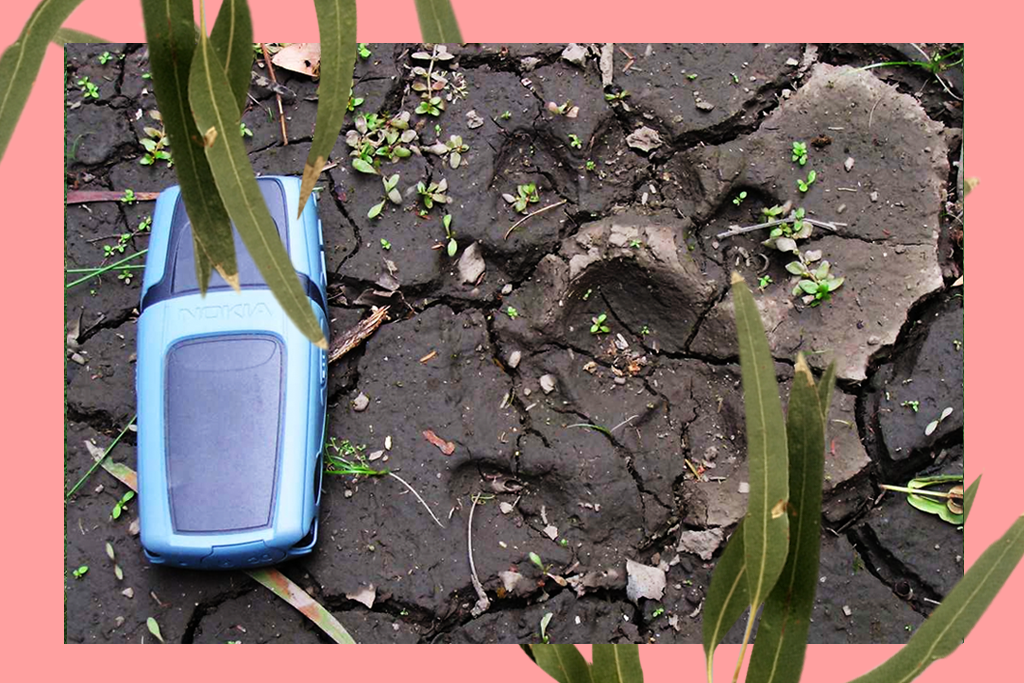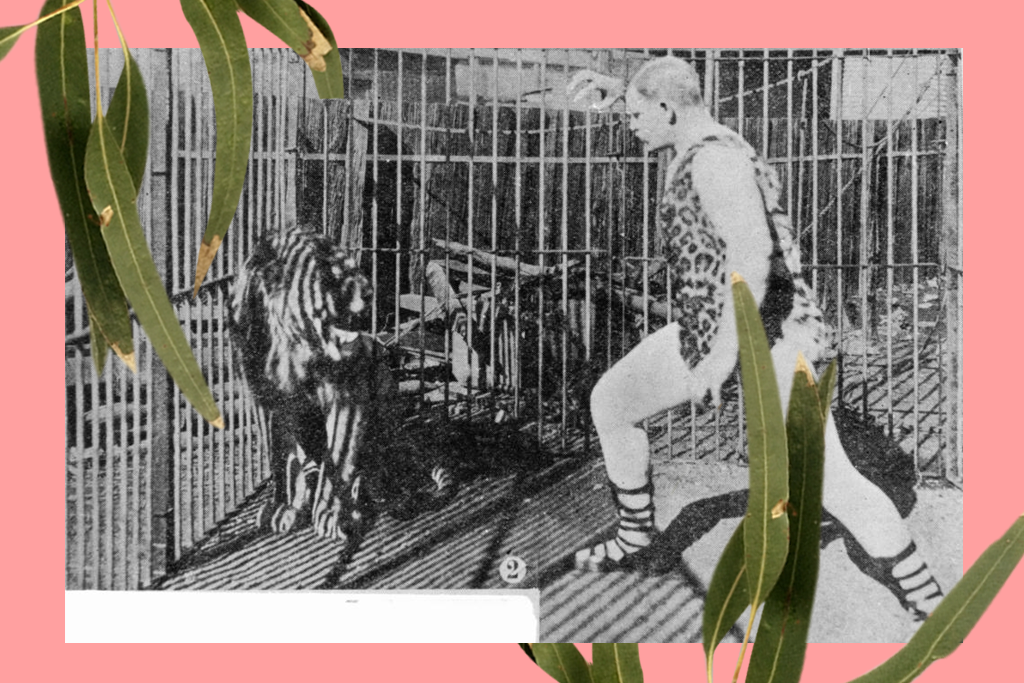Are There Really Panthers Roaming The Australian Bush? The Story Behind The Urban Legend
Hundreds of people swear they"ve seen big cats in the Australian wilderness. Could they be right?
Imagine a sheep. Now imagine it without a face, or rather with its face ripped off. It is still, remarkably, alive.
Alternatively, imagine it mangled but up a tree, stuck in the branches. A pain in the arse for its owners to get down, but it’s not like you can leave a dead sheep up a tree.
Or if dead sheep aren’t really your thing, imagine instead that you’re out in your backyard, hanging washing, and something comes out of the bush. Some kind of animal on four legs; fairly large, dark in colour and moving furtively. Maybe you get a photo, or find a footprint later in the dirt, one that certainly isn’t from a wallaby, or anything else you’ve ever seen.
If you’ve witnessed these kinds of things, you start to wonder about what could be behind them. If you wonder for long enough — or if you’re one of the people who’s seen the thing itself, clear as day — one particular theory seems to emerge.
I know, because I’ve spoken to the people who’ve seen these things. Their theory? That there are big cats roaming the Australian bush, pumas or maybe even panthers. They’ve got hundreds of sightings, boxes of evidence, and even a few experts open to the idea. Some even think the government knows, and is covering it up.
Whether that’s true, you’ll have to decide for yourself. Here’s what we know.
Let’s start with a basic fact: panthers don’t exist. Or at least, not as we usually think of them — panther isn’t a species, just a word used to refer to the melanistic, or black, variants of actual big cat species like leopards or jaguars.
That makes the net we’re casting in Australia pretty broad — people typically describe panthers, but could be seeing anything from pumas to leopards to spectres in the mist. And while the suggestion that we’re seeing any kind of big cat in Australia is quite frankly absurd, it’s also incredibly persistent, cropping up in most states and spanning decades, even centuries.
Chris Coffey lives in the Hawkesbury region, out west of Sydney, and maintains what is widely considered to be the largest database of big cat sightings in the country. She started it in June 1998, after hearing strange noises in the bush right around the time that a National Parks officer in the area swore he’d seen a panther.
“He contacted me, and then more things started happening,” Coffey told me over the phone. “We had animal predation, like goats in trees — oh, totally gutted out, like the skin in one side and the backbone left.”

An image of a dismembered goat (censored for gore). Copyright Christine Coffey, used with permission.
Coffey and some friends recorded the strange events, and quickly found themselves in over their heads. The database today has amassed an estimated 560 entries, everything from sightings to mysterious paw prints and scats, bizarre animal predation, unexplained damage. That’s hundreds of people who claim to have seen something, and as Coffey put it, “we’re not all stupid people”.
“I mean, the people on that database are doctors, solicitors, police officers, police detectives, you know?”
“Nobody rings in anymore, because the media have made them feel like they’re idiots.”
“Nobody rings in anymore, because the media have made them feel like they’re idiots. It’s very disappointing, because we know it’s still there.”
Coffey has also seen the mystery cat herself. “Oh, it used to romp around my property like it was the family pet,” she told me with a laugh. She initially assumed what she was glimpsing was the neighbour’s Dobermann — “why would you think cat, in this country?” — but the more she saw it, the more things didn’t quite add up.
“When I thought back I thought hang on a minute, a dog doesn’t swivel on the ground. A dog doesn’t go up and just jump a fence, and then run up the road. And a dog doesn’t do one mighty leap, ten foot.”
Also, she saw it eating a lyrebird, just ripping into the thing. Later, she found a pile of shit near her back door, full of bones and sheep’s wool.
Chris Coffey wasn’t the only one gathering sightings quicker than she could count them. Across state and decade lines in 1980s Victoria, a group of interested individuals formed an organisation dedicated to chasing reports of big cats.
The group has gone through a number of name changes over its years of existence — first the Rare Fauna and Phenomena Research Foundation, then just Rare Fauna Research, and finally the Australian Rare Fauna Research Association, or ARFRA. Its purpose has wavered too, at times casting a wide net to investigate UFOs, ghosts, thylacines and Yowies, and at other times focusing intently on big cats. As ecologist Bryan Walters politely put it over the phone, “they’re an interesting mob, let’s say. An eclectic group of visionaries and conspiracy theorists and plain old I-love-being-scared-in-the-dark folks”.
Of its eclectic interests, ARFRA’s work on big cats is what it’s better known for. As Mike Williams and Rebecca Lang wrote in a 2010 book on the subject, ARFRA’s sighting database was believed to contain more than 4500 entries (today, its website claims 10,000). ARFRA members identified patterns of sightings, mapped reports, and attempted to work with government and experts to prove the cats’ existence.

One of the most frequently circulated images of an “Australian panther”, which continues to resurface despite being a hoax.
Over time, though, the group became more secretive; founding members left, and information started to be held more closely. In 2002, its remaining founder died of a heart attack, and since then things seem to have died down. Whatever information the group still holds is locked away somewhere away from prying eyes, and new members must sign a contract of confidentiality to get a glimpse. ARFRA did not respond to multiple requests for comment for this story.
“It is within the realms of possibility that there are large escaped carnivorous felids running around the place. It’s not that crazy, on the scale of craziness.”
Still, ARFRA locking up the rumours doesn’t mean they don’t exist. As author Mike Williams told me just the other day, “I don’t even want to know any more cat witnesses, but they just keep coming out of the woodwork”.
“Everyone’s aware of the mythos associated with it. I could throw a bowling ball into a local supermarket at any time up here, and if I hit a number of people and asked them, inevitably most of them will either know about it or know someone who does.”
“And most accept the possibility, because it is within the realms of possibility that there are large escaped carnivorous felids running around the place. It’s not that crazy, on the scale of craziness.”
Sometime in the last two decades, ecologist Bryan Walters was sent, quite literally, a crock of shit.
More specifically, he was sent a series of mysterious animal scats that showed up on a property out in Winchelsea, Victoria. There had been some kind of predator about, lots of vague big cat sightings, and a young farmer was worried about his sheep.
Walters agreed to analyse the scats. “I went through and yeah, it was fox, fox, fox, fox, fox”, he said.
“But then I got this one scat that was really smelly — you know, a different kind of smell. Acrid, makes your eyes water. I thought, what’s going on here? So I clean it up, do the analysis, and the only thing I can get it to match is American mountain lion.”
Of course, Walters first assumed he was wrong, or being hoaxed. So he sent the sample off to two other experts, who he described as among the most respected for hair analysis in the state.
“And both of them said — covering their backsides, written in the negative — well one of them said ‘if this came from the wild it comes out as American mountain lion to me,’ and the other one said ‘I cannot repudiate or I cannot say that this is not American mountain lion’.”
This is the part where I tell you that if you were expecting the experts to rubbish the big cat claims, think again.

An image of a mysterious footprint, with a mobile phone for scale. Copyright Christine Coffey, used with permission.
Walters isn’t a believer, necessarily, but neither can he rule out the possibility of big cats in the Australian bush. As a former ecologist for Parks Victoria, he’s heard too many compelling stories, and seen evidence that’s hard to dismiss. The way he sees it, there’s no substantial proof yet, but there’s also “scope for hope”.
He’s also got the expertise to back that statement up — not only does he have decades of experience as an ecologist and wildlife expert under his belt, but he once travelled to the US to get practical experience tracking mountain lions in the wild with the Fisheries and Wildlife department there.
While Walters worked at Parks Victoria, he had all incoming calls about big cat sightings routed to his office, and kept meticulous files tracking reports. When people called in to report a sighting, he developed a system where he asked a number of calculatedly misleading questions — asking, for example, if they’d seen pointed ears. If the caller answered yes, their report was discounted as unreliable. Big cats do not have pointed ears.
Over the years, Walters accrued hundreds of reports, many of which were clearly fantasy. A handful, though, remained with him, and remain difficult to disprove.
“There are too many people reporting sightings. Of particular concern is if there are little kids out there and there actually is one of these things.”
“From memory I had about 300 records, and from those 300 there were four or five that I could not fault,” he told me. “They were close up, they were first hand, they’ve got everything, they got the width of the teeth and everything right.”
“But saying all that, the government maintains, and I would validate that from my point of view, that sightings there may be, but there is as yet no substantial evidence of these animals existing in the wild.”
Still, Walters isn’t the only expert with cautious hope. Dr. David Phalen, Associate Professor of Veterinary Science at the University of Sydney, told me it’s unlikely but possible that a big cat is out there.
The government, too, has at times taken the rumours seriously, or at least appeared to. In 1997, the Victorian Department of Sustainability and the Environment used helicopters and thermal imaging to search for a mystery predator that killed more than 400 sheep in the Gippsland area over two years. In 2003, a report commissioned by the NSW government found that while there was no conclusive evidence of big cats in the bush, they were “more likely than not”. And in 2008, after receiving an extensive database of sightings, NSW Premier Nathan Rees told media he didn’t necessarily think the panther was an urban myth.
“There are too many people reporting sightings,” he said. “Of particular concern is if there are little kids out there and there actually is one of these things.”
Rees arranged an investigation, but its 2009 findings were underwhelming: there was no conclusive evidence found.
Or was there? No good conspiracy theory is complete without an accompanying rumour of government coverup, and the fact that multiple Freedom of Information requests have revealed the NSW government knew more than it was letting on hasn’t helped. In 2001 and 2008, Freedom of Information requests uncovered expert opinions provided to the government, which cautiously noted that the most likely explanation of available evidence was a big cat.
For Chris Coffey, these revelations were just the final nail in the coffin. She’d noticed over the years that every animal scat she sent in to the Department of Primary Industries seemed to come back identified as “dog” or “wallaby”, even when experts Coffey spoke to personally said that wasn’t the case. One memorable scat was identified by Coffey’s expert as coming from a large carnivore, but the government insisted it was dog vomit — despite supposedly using the same expert.
“It went from a turd to a vomit to a turd,” Coffey told me. “Now tell me there’s not a coverup.”
Let’s entertain, for a moment, the idea that people really are seeing big cats. The next question is obvious: where did they come from?
There are actually quite a few theories that purport to answer that. One is that in the 1940s, certain US troops stationed in Australia brought their unit mascot, the puma, with them. An odd thing to bring to a world war, for sure, but as the legend goes the troops smuggled them in anyway, hiding them in secret compartments on aeroplanes.
Alternatively, there’s the circus. Australia was going through a real circus phase in the late 1800s, and with 1800s circuses invariably come big cats in cages. These cats travelled the country with the rest of the circus, and there are more than a few reports of accidents, crashes and escapes at that time — so many, in fact, that Williams and Lang ask in their book “were circus folk really such bad drivers?”.

A trainer with a lion at Wirth’s Circus in Brisbane, 1903. Public domain.
Add to that the possibility of escape from zoos, or the exotic animal black market, and there are plenty of potential sources for big cats in this country. Where the wheels fall off these theories is the simple question of survival: a big cat’s natural lifespan is around 12 years, give or take depending on species.
Associate Professor David Phalen told me cat sighting believers tend to look stumped when he asks them about breeding, as if the need for the animals to reproduce to survive has never occurred to them.
“The possibility that for some period of time, for a very short period of time, an animal got away, was able to adapt to the wild again after being in captivity, and able to survive for some period of time is plausible,” he said.
“But the likelihood that they would end up establishing a breeding colony seems very unlikely to me.”
If the cats aren’t breeding, then it’s time to entertain a new question: what else is out there? After all, as Chris Coffey reminded us, hundreds of people are seeing something awfully panther-like, and they’re not all idiots.
Enter the so-called reasonable explanations: that people are just seeing big feral cats, or mangy foxes, wallabies, dingoes or koalas.
Koalas, surprisingly, are one of the biggest contenders for the dubious title of potential panther — Coffey told me that once when she called National Parks to ask “what on earth could be in the bush that sounds like a tiger?”, their immediate response was “koalas mating”. Coffey was unconvinced, but have a listen to the guttural horror that is a horny koala and you may come to a different conclusion:
[embedded content]
Ecologist Bryan Walters also told me mistaking a koala for a puma is easier than it sounds. Once, a couple rang him up to say they had found a big cat carcass and kept the paw. He asked them to send him a photocopy, and lo and behold, it was a koala paw.
“I took it to be a kind of hoax,” he said. “Or maybe it was just a bloke from the city who doesn’t know anything about what a puma looks like.”
Of course, while it’s possible to mistake a koala for a puma from certain angles, koalas are undeniably much smaller than any kind of big cat, and missing some pretty key features like the tail. They also tend to move much less gracefully, though Walters stopped short of ruling out koala athleticism altogether.
“I’ve seen koalas do amazing things,” is how he put it.
David Phalen, meanwhile, places his bet on swamp wallabies.
“If you’re going along the road and you sort of see the backside of a swamp wallaby with its tail going into the bushes, that could very much look like a big cat to you,” he said. “You see the tail going in, but you don’t see the rest of them.”
As for large feral cats, that explanation came up again just recently when Channel Nine obtained footage of a blurry mysterious shape out in the Blue Mountains.
Still, people weren’t convinced. “This was moving around with that big cat swagger,” local Steven Muiser told reporters.
People like Chris Coffey, understandably, aren’t comforted by theories of koalas or wallabies. Those who claim to have seen the big cat vary on many details, but they’re united in one thing: they’re all certain they’ve seen it. Once you go big cat, you don’t go back.
“There was a policeman in a country town in Victoria who’d been around, knocked about, these sort of things,” Bryan Walters told me when we spoke. “And he was absolutely sceptical about these big cat stories, absolutely.”
“But then he was driving the police car home from some job somewhere, and off a bank came a big cat. It sailed straight over the bonnet of his car and landed next to it, and in two bounds it was gone.”
“He watched it all the way. He saw it move, and by the time it was gone, he’d completely changed his concept of it. He was convinced that’s what he saw.”
“People don’t want you to disprove them,” is David Phalen’s theory. “If people see something that in their mind looked like one of those, it’ll stay there. And I don’t think you’ll ever be able to adequately disprove it so that everybody in the public believes that that’s the case.”
“If somebody really saw one, and had a good picture of one, I’m sure it would come out straight away, in this day and age. And I guess until we get one of those, we just have to assume that they’re not there.”
“But no one’s going to believe that completely.”
_
Feature image via US Fish and Wildlife service (public domain).
_
Sam Langford is one of Junkee’s Staff Writers. They tweet about weird Australian conspiracy theories and other good yarns over at @_slangers.
Comments
Post a Comment